The Best Time to Travel to the Faroe Islands
If you are wondering when the best time is to visit the Faroe Islands and what considerations to make for each season, then read on to understand what you are in for any given time of year.
The weather is undoubtedly the most important factor to consider. It plays a significant role in the lives of people in the Faroe Islands, affecting nearly every aspect of regular day-to-day activities. The subpolar oceanic climate is characterized by mild winters, cool summers, and quite frequent rainfall, fog, and wind, which sometime make it challenging to plan ahead. It is not without reason some say the Faroe Islands is the land of maybe as outdoor plans are often shaped by the weather.
Although the islands are a great destination to visit throughout the year, particularly in a camper van, each season has its own characteristics and the best time to visit depends on your preferences. Below a brief overview of what to expect during each season:
Spring (March-May)
Spring is an excellent time to visit the Faroe Islands for those who enjoy the outdoors and would like to witness the island’s natural landscape come to life again after the winter months. While the temperature will still be quite chilly, the weather is generally mild with longer daylight hours. Here’s what to expect during springtime in the Faroe Islands:
- Greening natural landscape
- Longer daylight hours
- Seabirds such as puffins, guillemots, and kittiwakes returning to nest on the steep cliffs
- The locals spending more time outside and the villages becoming livelier
- Fewer visitors on the islands for more discretion
During spring, the landscape of the Faroe Islands transitions from brown/yellowish to green and there is ample opportunity to experience wildlife with sea birds, including the puffin, returning in droves from warmer climates to nest on the steep cliffs along the coastline. The locals will be spending more time outside, the small villages spread across the islands become livelier and the general mood of the islands becomes more gleeful.
During this season, sheep give birth to their young, and one can observe the delightful sight of frolicking lambs in the open meadows. Exercise increased caution while driving, as these spirited creatures may unexpectedly leap onto the roads.

Keep in mind that the weather in the Faroe Islands is quite unpredictable, and occasional snowfall is possible during this time of year. But don’t let the rain or snow deter you from visiting as the weather changes quickly, and you can still experience bright and sunny moments.
In our humble opinion, spring is one of the best times to visit the Faroe Islands. And why not rent a camper van while you are at it. Just make sure you bring proper clothes and a good pair of shoes, then you will have everything you need with our vans to stay dry, warm, and comfortable at night.
For tips on clothing and accessories to bring on your visit to the Faroe Islands, please read this post written by yours truly for our sister company. Please also check out our case for visiting the Faroe Islands in camper van.

Summer (June-August)
The summer months are the most popular time to visit the Faroe Islands due to the milder weather and extended daylight hours. The average temperature ranges from 8-12°C (47-54°F), great for outdoor activities. Here’s what to expect:
- Long daylight hours with the midnight sun
- Mild weather with occasional rainfall
- Great hiking opportunities on the islands’ many trails
- Plenty of art, music and other cultural events
- Bustling life in the capital city of Tórshavn
Although there will be more visitors on the islands during the summer, the Faroe Islands don’t get crowded like other tourist destinations. The vast mountains provide plenty of space for both locals and visitors to comfortably go about their day without stepping on each other’s toes.

Arguably the best thing about visiting the Faroe Islands during the summer is the light. The nights are short, and the days are long, with up to 20 hours of sunlight a day. Visitors have the chance to start exploring in the early morning and finish late at night without rushing the whole day into an 8-hour window. Whatever you would normally see during the daytime hours can also be seen later in the evening.
Visitors should prepare and expect to experience rain during their stay. It rains on average 12 days per month at the height of summer (hope you haven’t cancelled the trip yet!). It’s not unusual to experience sun, rain, wind, and calm all on the same day, which is part of what makes the islands so unique.
The Faroe Islands have a rich cultural heritage that comes to the fore during the summer months with plenty of opportunities to experience the unique art and music scene as well as other cultural traditions of the islands.

The capital city of Tórshavn really comes to life during the summer months, with both locals and visitors enjoying the city’s great selection of restaurants, bars, and cafés. The Faroe Islands have experienced a gastronomical awakening in recent years, with a community of chefs eager to experiment with traditional cuisine, bringing great enjoyment for both locals and visitors alike. See a selection of our top restaurant picks here.
The summer months are an excellent time to visit the Faroe Islands, with bustling life, long daylight hours, lush green natural landscapes, and plenty of opportunities to experience the unique cultural heritage of the islands. You won’t go wrong visiting the islands during summer.

Autumn (September-November)
While the climate can be brisk and windy during Autumn, the temperature typically ranges between 5°C to 10°C (41°F to 50°F) and is typically milder than what you would experience during spring. The Faroe Islands are also quieter during autumn than during the peak summer months, so visitors can experience a more peaceful and authentic side of Faroese life. Besides the chance to catch a glimpse of the Northern Lights (aurora borealis), autumn is a great time to immerse oneself in the island’s culture and take long walks or hikes. Here is what to expect:
- Mild climate but can be brisk and windy
- Quieter and more peaceful than summer months
- Best season for foodies with local cuisine of fermented sheep meat and young fulmars
- Chance to witness sheep slaughtering and food preparation with locals
Food is an integral part of Faroese culture, and autumn is an especially exciting time for foodies. Sheep are a vital source of food for the Faroese, and during late summer and early autumn, the slaughter takes place in the meat is typically wind-dried for preservation. This unique process of fermentation gives the meat its distinctive and flavorful ræst taste, which is not to be missed when visiting the Faroe Islands in the fall. For a truly authentic experience, try to connect with local families who may invite you to witness the slaughtering process or even participate in preparing and cooking the meat.

Another culinary highlight of the autumn season is the hunting of young fulmars in late August. While the term ‘hunt’ may seem a bit of an overstatement, these young seabirds are scooped up with nets during their first flight, after landing on the ocean surface for a few weeks to burn off some of the fat. The young fulmars are considered a delicacy, and islanders eagerly await the season to indulge in this special treat. Although it can be challenging for visitors to find a restaurant serving young fulmars, there is still a chance to sample this delicacy. Local fish markets by the harbor often have vendors selling them, and adventurous foodies can purchase the birds and prepare them with the help of some local guidance.

However, if you’re unable to try the young fulmars, don’t despair. The rich fishing grounds and the variety of seafood available in the fall season is still incredibly delicious, and there will be plenty of fresh and flavorful options to satisfy any seafood lover’s appetite.
While there are many exciting culinary events to look forward to during this season, there will also a good selection of cultural events taking place. To keep up-to-date with scheduled events, we recommend checking out www.whatson.fo (which is currently undergoing an update and should be available soon). This website offers an excellent resource for visitors looking to plan their itinerary and make the most of their time on the islands.
Overall, autumn is a great time to visit the Faroe Islands, particularly if you are interested in the unique culinary experiences the islands have to offer, but also offering visitors a chance to experience the islands’ natural beauty and cultural traditions in a quieter and more authentic setting. We promise you won’t go wrong with visiting the Faroe Islands during autumn.
Winter (December-February)
Winter is quite an exceptional time to experience the Faroe Islands in all its natural grandeur. Despite the unpredictable weather conditions, the snow-capped mountains, turbulent waves, and brooding skies make the landscape even more dramatic. The winter season also provides visitors with the best opportunity to witness the Northern Lights, with daylight lasting a mere five hours in December. Here is what to expect:
- Dramatic and moody landscapes with snow-capped mountains
- Best time of year to watch Northern Lights
- Accommodation and camper van rentals are cheaper
- Fewer visitors mean more peaceful and authentic experiences
Although the weather can be harsh, travellers who embrace the unpredictable conditions will be rewarded with an unforgettable experience of the Faroe Islands’ natural beauty. To make the most of your visit, it’s important to adopt a weather-independent approach and be flexible with your plans. Be prepared to adjust your itinerary as needed to make the most of the limited daylight hours and embrace the dark evenings and mornings that are characteristic of the season. As you’ve likely heard before, warm clothing and layers are essential for staying comfortable in the cold and windy weather.
Most of our camper vans are equipped with heaters connected to the vehicle’s gas tank and leisure battery, which will keep the van warm and comfortable even during the coldest winter nights without the need for the engine to be turned on.
To gain a better visual idea of what to expect during a winter visit to the Faroe Islands, we recommend watching this promotional video from Visit Faroe Islands.

For budget-conscious travelers, accommodation options are generally less expensive during winter due to the lower number of visitors. The same holds true for our camper van rentals which offer an excellent option for those seeking a more flexible and cost-effective travel experience during the winter months. All our camper vans are equipped with heaters for the winter season, ensuring that you stay warm and comfortable despite the colder weather. We also offer the option to purchase Wi-Fi access, which is perfect for cozying up in your van watching your favorite show on Netflix or staying connected with friends and family. With our affordable and well-equipped camper van rentals, you can enjoy the natural beauty of the Faroe Islands on your own terms, without breaking the bank.
With these considerations in mind, a winter visit to the Faroe Islands is a unique and rewarding experience that offers visitors the chance to witness the islands in a new and fascinating light. Nevertheless, this is also the season where you are the likeliest to encounter harsh weather conditions with heavy winds, rain, and potentially snow. This can undoubtedly be challenging and test your patience, just as it does for the locals who endure it every year. However, for adventurous travelers with a willingness to embrace the unexpected, a winter visit to the Faroe Islands it certain to provide an experience beyond the ordinary that will stay with you for a long time. With a bit of preparation and an open mind, you can discover the magic and wonder of the Faroe Islands during the winter season and create memories that will last a lifetime.

A year-round destination for adventures minds
The Faroe Islands has something to offer no matter the season. From the lush greenery and long days of summer to the dramatic and moody landscapes of winter, each season offers its own distinct charm and opportunities for adventure. Autumn is the perfect time for foodies to sample the unique and flavorful local cuisine, while winter presents a chance to witness the Northern Lights and explore the rugged terrain in a more peaceful setting. In the springtime, visitors can enjoy the vibrant colors of blooming flowers and migrating birds, while summer offers long days of outdoor activities and cultural events.
So why wait? Pack your bags, embrace the unpredictable weather, and embark on a journey to the hidden gem of the North Atlantic.
Oh, and book your camper van rental here. If you have any questions, please get in touch or check out our FAQ.
We look forward to seeing you soon!
Related Articles
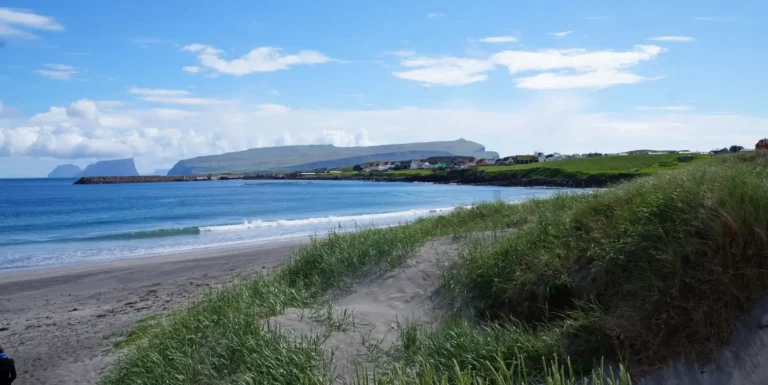
Discovering Sandoy in a Campervan
Explore Sandoy in a campervan! Discover scenic villages, rugged cliffs, sandy beaches, and hidden gems on this peaceful Faroe Islands road trip
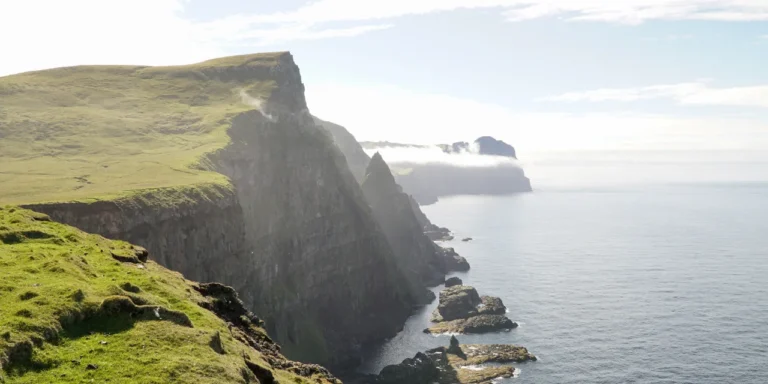
Discovering the Best of Suðuroy in a Campervan
Suðuroy is often bypassed by visitors, yet it offers some of the most breathtaking landscapes and authentic experiences on the Faroe Islands
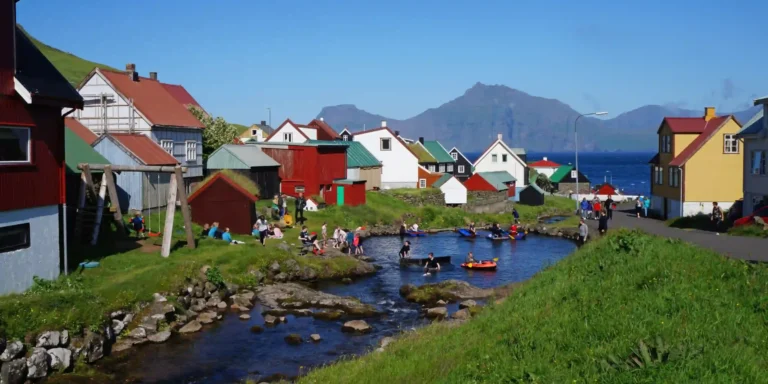
Plan Your Camping Trip to the Faroe Islands
Plan your camping trip to the Faroe Islands with tips on packing, navigating, embracing weather changes, and camping responsibly. Adventure awaits!

The Best Camping Sites in the Faroe Islands
Curious about which of the 20 camping sites in the Faroe Islands stand out? We’ve highlighted the best camping sites the Faroe Islands have to offer.
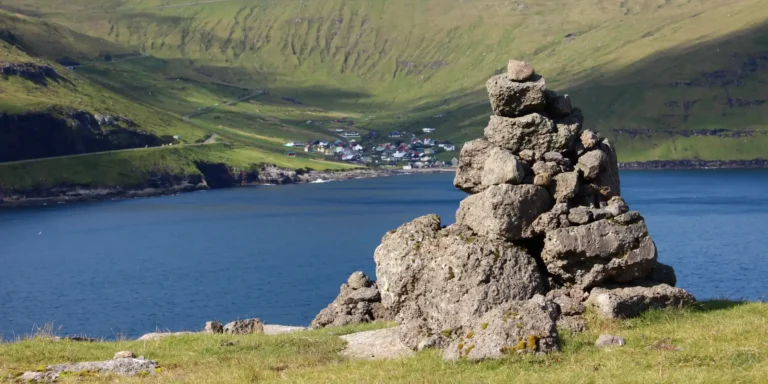
Hiking in the Faroe Islands Without Paying Fees
While some popular trails in the Faroe Islands require guided tours or charge fees, others remain free and easily accessible to explore on your own.
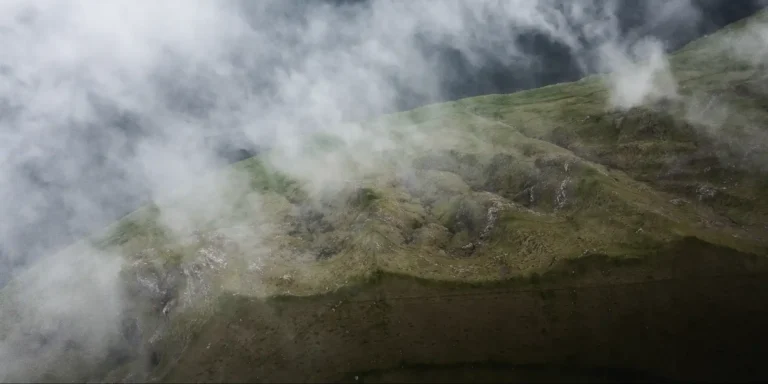
Staying Connected in the Faroe Islands: Wi-Fi and 4G Data Guide
Read our Wi-Fi and 4G data connectivity guide on everything from local SIMs to public Wi-Fi hotspots and portable 4G connection devices.
